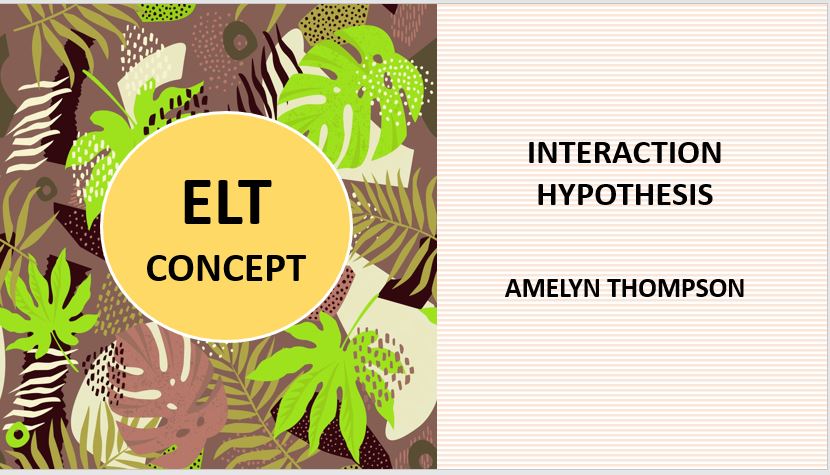Interaction Hypothesis
Amelyn Thompson – 28 June 2021
What is it?
The Interaction Hypothesis holds that learners can acquire language successfully by engaging in meaningful interaction with others, as they negotiate meaning and work to repair any misunderstanding. Interaction involves both oral and written conversations. Learners can interact with people at home, teachers, and other learners too. This is in line with Ellis’ (2005) Principle 8, which reminds teachers to provide scaffolding and give students chances to negotiate meaning amongst themselves as that is when “acquisition-rich discourse” will probably occur (p. 219).
Why is it important?
Learners’ output is not perfect and the resultant breakdown in communication draws attention to the gaps between their knowledge and the target forms. This allows them to notice and attempt to repair the breakdown in three main ways: confirmation checks, clarification requests, and comprehension checks.
Interaction provides both explicit and implicit feedback. Explicit feedback usually comes from teachers while implicit feedback (the 3Cs above and recasts) may come from any interlocutors.
Studies have shown that interaction in the L2 classroom produces durable beneficial effects, which are seen on both posttests and delayed posttests (Loewen, 2015). However, not all interaction may be helpful, and so further research is needed to pinpoint specific areas of use and strategies.
Reflection
I have included pairwork and groupwork activities in my classroom regularly, but I am worried about the weakest students and how they might or might not benefit. Positive interdependence is something I am trying to incorporate more.
One activity I hesitated to implement was the jigsaw reading task, as I felt there was a greater potential for wrong information to be transmitted. When I finally tried it out a few years ago, I found that it was a good experience, as the weakest students were still able to become ‘experts’ in the small groups.
The opportunity to rehearse the answers in their large groups gave them more confidence and fluency in conveying the information later. The stronger students also benefitted from giving feedback and exercising their language skills to help others. This has made me more open to trying out different kinds of activities in class.
The main challenges have been students using their L1 and not staying on task. Upon reflection, this could be due to the level of difficulty, and also the nature of the task. For instance, at lower levels, pairwork tasks asking students to spot the differences between their sheets is common and easy to implement.
However, this may not be interesting after a while as it lacks real-life applicability. I will try to design more activities that are practical and conducive to spontaneous meaning-making (such as role-plays based on situations students might encounter), and also check that proper scaffolding is done, such as pre-teaching necessary vocabulary and modelling appropriate language use for the context.
Reference
Ellis, R. (2005). Principles of instructed language learning. System, 33(2), 209-224.
Loewen, S. (2015). Introduction to instructed second language acquisition. New York: Routledge.
ELT Concept #1 – Communicative Competence


Interaction in L2 situation is a great challenge for junior high students in rural area who didn’t get any English lesson when they were at their elementary schools. They have no vocabulary and grammar base as the starting point to engage in interaction let alone to give feedback to their friends’ spoken English. That’s the case that I face in my state secondary school in a rural area of Jogjakarta.
Michael Long, I think in a 1996 or earlier paper, pointed out that people monitoring within an interaction (when participant is not reading or speaking yet still actively involved, paying attention, noticing or whatever) do not have the stressors of thinking of accurate language, meaning, pragmatics and meta-cognitive processing about all that.
Moreover, a group of 3 or more has greater efficacy than, say, 2.
Interestingly though obviously, this dynamic can apply to other things besides English.